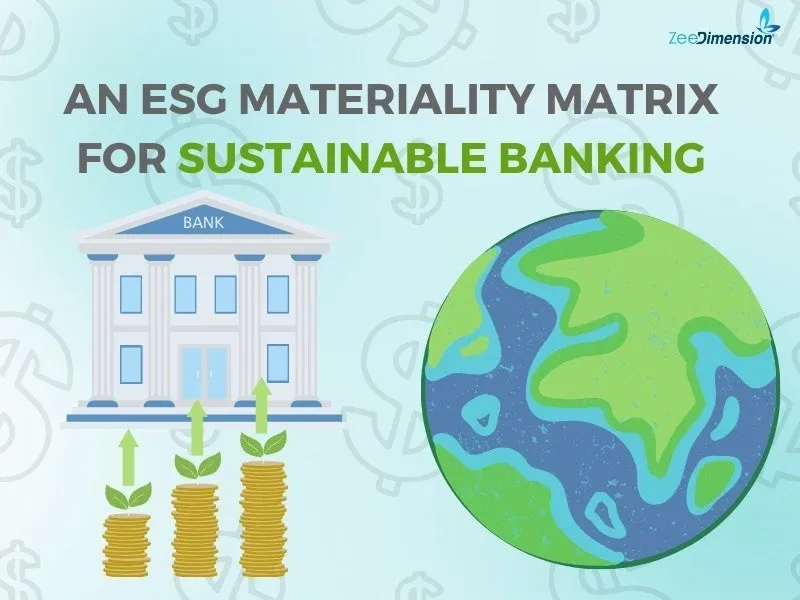
Step 1: Define the Purpose and Scope
ZD Bank aims to identify high-priority ESG factors that will guide its long-term sustainability strategy. This process will ensure compliance with global banking standards and enhance reputation. For example, the bank wants to improve its ESG rating by 20% within two years and mitigate operational risks associated with climate change and data privacy.
Step 2: Identify and Engage Stakeholders
Internal: Executives, risk and compliance teams, and IT security.
External: Regulators, local communities, NGOs, and customers.
Example Engagement: ZD Bank surveys 5,000 customers to assess their expectations regarding sustainable banking practices. Meanwhile, a focus group with regulators and board members evaluates compliance expectations on data protection and ethical practices.
Step 3: Identify Potential ESG Issues
Important ESG concerns in the banking industry could include the following:
Climate Risk (Environmental): the region’s propensity for natural disasters impacts ZD Bank’s physical branches. For instance, last year’s flood caused three branches to lose service, requiring $1 million in repairs. Investing in resilient infrastructure or renewable energy sources for branches could help reduce climate risk.
Financial Inclusion (Social) – Scenario: ZD Bank identifies that 20% of the rural population lacks access to banking. By launching mobile banking units or digital wallets in these areas, ZD Bank could improve financial inclusion and capture a market with potential growth.
Cybersecurity and Data Privacy (Governance): For instance, ZD Bank has sensitive financial information for three million customers. According to a recent industry report, cyberattacks targeting banks have increased by 30%, raising the possibility of both financial loss and harm to the institutions’ brand. This risk would be reduced by bolstering cybersecurity safeguards.
Step 4: Assess the Impact and Importance
ZD Bank rates each ESG issue numerically to determine its significance and impact:
📷
Example Outcome: Data Privacy and Cybersecurity score high on both dimensions (9 for impact, 10 for importance), indicating a priority area.
Step 5: Prioritize and Plot on the Matrix
Based on the scores, ZD Bank creates a matrix:
High Priority (Top Right): Data Privacy & Cybersecurity, Financial Inclusion.
Medium Priority (Middle): Climate Risk, Ethical Governance.
Results of the Scenario: Data Privacy Investment in financial inclusion and cybersecurity is urgently needed. For example, ZD Bank may set aside $500,000 for financial inclusion initiatives and $2 million for cutting-edge cybersecurity measures.
Step 6: Validate with Stakeholders
ZD Bank presents the matrix to stakeholders for validation:
Scenario: Consumers want better data security, demonstrating how important it is. The bank’s financial inclusion initiatives are supported by regulators, especially if they target underprivileged populations.
Quantitative measures, such as 90% of consumers agreeing that data privacy enhancements are a vital necessity, may be used in this validation process.
Step 7: Communicate and Integrate Findings
With the matrix validated, ZD Bank integrates the findings into their operational and strategic plans:
1- Climate Risk Mitigation: Allocate $1 million to upgrade branch infrastructure in flood-prone areas. The goal is to reduce climate-related operational disruptions by 30% over the next five years.
2- Financial Inclusion Programs: Launch a rural outreach program to onboard 10,000 new customers from underserved areas within the first year.
3-Data Privacy Enhancements: Implement multi-factor authentication, encryption protocols, and regular cybersecurity audits. The target is to reduce cybersecurity incidents by 40% over the next three years.
4- Ethical Governance Initiatives: Implement quarterly training for all employees on ethical conduct and anti-money laundering (AML) practices, aiming to achieve 100% employee compliance in ethical training by year-end.
Conclusion :
The development of an ESG Materiality Matrix for ZD Bank presents a structured approach to identifying, assessing, and addressing the bank’s most critical environmental, social, and governance (ESG) risks and opportunities. By aligning the matrix with stakeholder feedback and prioritizing key ESG factors such as data privacy, cybersecurity, financial inclusion, and climate risk mitigation the bank has effectively set the foundation for a sustainable and future-proof strategy.







